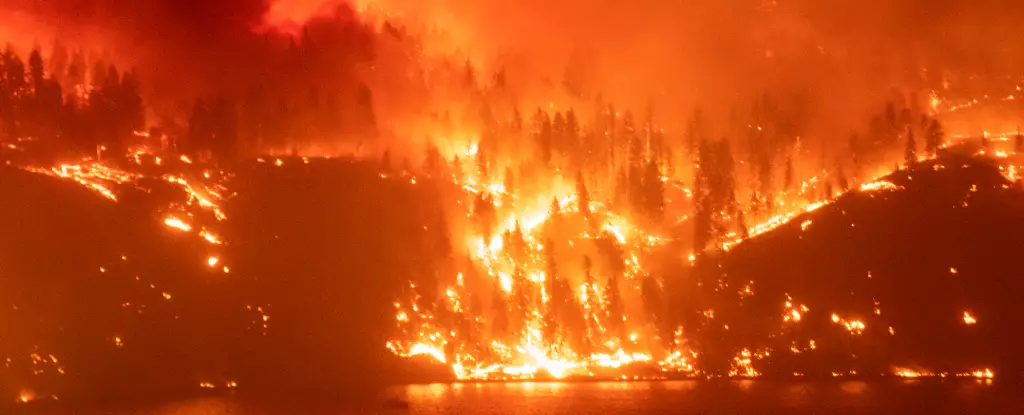The recent widely publicized wildfires across Los Angeles and other parts of the world, such as Maui, Greece, and Australia, alarmingly illustrate a grim reality of our times. As fires sweep across various landscapes, they leave behind a clear message: humanity’s relationship with fire has drastically shifted. The idea is not merely that fire is a recurring natural disaster but that it is fundamentally intertwined with the rapid transformational changes humanity is imposing on the environment. The question that arises is whether we are entering a new epoch defined by fire, one that rivals our historical understanding of ice ages. This article delves into the historical narrative surrounding fire, examining how humanity’s practices have shaped our present ecological landscape and what this means for the future.
To understand our current predicament, we must reflect on the long-standing relationship between humanity and fire. Since the dawn of civilization, fire has been an essential tool for survival, providing warmth, cooking food, and even facilitating community bonding. The historical narrative reveals that fire was once viewed as a controllable force, one that could be cultivated rather than feared. However, as societies evolved, so too did the scale and nature of our fire practices. The era of fossil-fuel burning ignited new possibilities, reshaping entire ecosystems and landscapes.
This “pyric transition,” as one may call it, is evident in the drastic shifts in land use. What was once harmony between forests and natural fire cycles has morphed into a complex web of disturbances, propelled by industrial forces and relentless consumption. The historical milestone of fire adaptation has seen a decline, giving rise instead to catastrophic fire events that threaten life and property.
The Ecological Ramifications: A Pyrogeography of Distress
The consequences of this evolution are not merely local but resonate worldwide, creating a unique “pyrogeography” where the characteristics of the landscape are shaped by fire. Historical studies suggest that a reduction in human populations paired with extensive land recovery led to unforeseen ecological changes. With fewer people managing landscapes, forests were allowed to reclaim territories, thereby assisting in atmospheric carbon sequestration but also increasing ignition potential.
What is more alarming is how the management of fire practices compounds ecological disruption. Fire management policies initiated to suppress wildfires have resulted in a build-up of fuels, creating a powder keg ready for ignition. The irony is palpable: efforts designed to protect and conserve lead to massive wildfire risks, emphasizing the need for a systemic reevaluation of how we approach fire.
As humanity has transitioned to a fossil-fuel-dominated society, our reliance on combustion has directly contributed to climate change, an overriding threat that exacerbates fire risks. The increase in atmospheric temperatures facilitates not only more frequent wildfires but also larger, seemingly uncontrollable flames fueled by human activities. This intertwining of climate and fire is complicating our understanding of what drives these disasters: is climate change the prevailing cause, or is it land-use practice? In reality, it’s a fusion of both, indicative of how our environmental choices have created an expansive, flammable canvas across the globe.
The complexity of modern fire dynamics demands a nuanced approach that rejects simplistic categorization. Fires interact with their environment and the changing climate, attempting to adapt to or capitalize on the surrounding conditions. Yet as natural landscapes attempt to reclaim balance, the interference from human activity disrupts this equilibrium.
We stand on the precipice of what may very well be dubbed the Pyrocene, where fire’s influence shapes ecosystems more dramatically than ever before. As we navigate this challenging era, we must forge a new narrative, one that embraces a holistic understanding of fire—including its ecological benefits and inherent risks. By integrating traditional burning practices with modern ecological wisdom, it may be possible to establish healthier landscapes capable of absorbing the fire’s impact rather than amplifying its destructive potential.
Policy reform is necessary, aimed at promoting resilience through fire-adaptive strategies that embrace ecological balance rather than suppress it. We should view fire not as a foe but as a part of complex ecological interactions. Instead of merely engineering countermeasures against fire, we must recognize the anthropogenic influences that create conditions vulnerable to it.
In essence, our current trajectory emphasizes a crucial lesson: fire’s complexity cannot be disentangled from human existence. Instead of viewing flames as mere disasters, we need to acknowledge that they are the product of intricate interactions—fire shaped by our actions, living within our landscapes. The choices we make now will determine whether we navigate towards destruction or cultivate a sustainable coexistence with fire in the age of the Pyrocene. The task ultimately lies in our collective hands to manage this duality, ensuring that fire remains a dynamic force of nature rather than a harbinger of chaos.

Leave a Reply